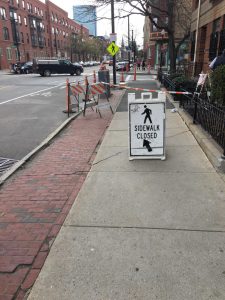Catching up on all things East Boston!
Yesterday, May 21st, Senior Program Manager Iolando Spinola and Program Coordinator Ava Dimond tabled for WalkMassachusetts at the Boston Athletic Association Neighborhood Fitness Series, presented by Boston Children’s Hospital. The walk/run took place at East Boston Memorial Park and featured a free 1 mile and 2 mile run/walk course for participants of all ages and abilities. The event was lively with music and lawn games, and especially well-attended by families with young children.
 Senior Program Manager Iolando Spinola tabling for WalkMassachusetts
Senior Program Manager Iolando Spinola tabling for WalkMassachusetts
 B.A.A.’s Neighborhood Fitness Series’ walk/run participants headed out at noon for their 1 or 2 mile course
B.A.A.’s Neighborhood Fitness Series’ walk/run participants headed out at noon for their 1 or 2 mile course
We also had the opportunity to connect with participants and say hello to some walkers from Caminatas Seguras, a walking group in East Boston that convenes each Tuesday to enjoy local parks and green spaces and discuss ways to improve their neighborhood. WalkMassachusetts is partnering with Caminatas Seguras and GreenRoots on a three year grant program to improve accessibility to East Boston Parks called Connecting Kids and Families to Parks and Open Spaces. This grant is funded by Boston Children’s Hospital.
Last Tuesday, Iolando joined Caminatas Seguras for their first post-winter meeting at the American Legion playground to share food and new initiatives. GreenRoots and WalkMassachusetts then attended Mayor Wu’s Neighborhood Coffee Hours at Noyes Park in East Boston to discuss community concerns, open space and their neighborhoods (and enjoy some Dunkin’ Munchkins and ice coffee!)

Caminatas Seguras and Iolando Spinola following their walk last Tuesday















